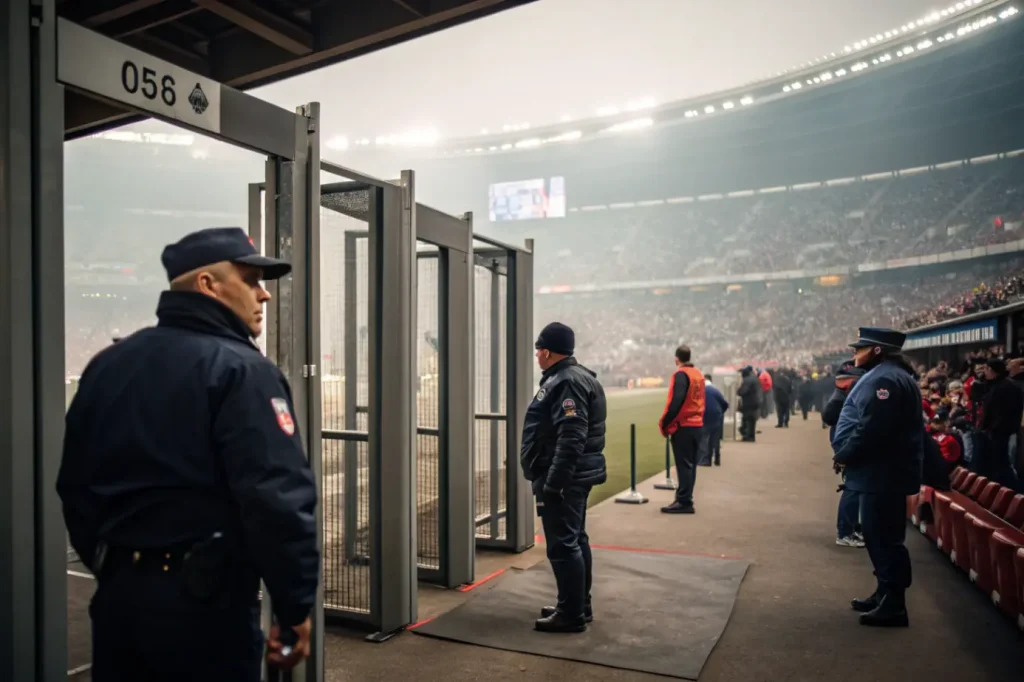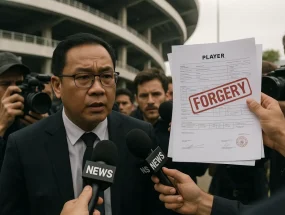Fan Violence 2025: How Leagues Strengthen Safety
100 views, 24.11.2025
The year 2025 has become one of the most turbulent periods in modern sports. Fan violence surged across football, basketball, baseball, and several international competitions, forcing leagues to rethink safety protocols. At the same time, a series of scandals involving elite athletes shook public trust, revealing deeper issues in professional sports culture. This article explores how leagues responded to rising fan disorder while examining the biggest controversies, naming the athletes, officials, and clubs involved.
Rising Fan Disorder Across Global Leagues
In 2025, multiple leagues reported spikes in matchday disturbances. The Premier League, Serie A, La Liga, MLS, and even smaller regional tournaments saw incidents ranging from pitch invasions to clashes outside stadiums. One of the most widely discussed cases occurred during the AC Milan vs. Roma match in February, where tensions escalated after a controversial decision involving referee Marco Serra. Flares were thrown, a group of ultras clashed with security staff, and more than 40 supporters were detained.
The NBA also dealt with disruptions after a confrontation between fans and Denver Nuggets star Jamal Murray. Following a heated overtime win against the Phoenix Suns, several spectators breached a courtside barrier, prompting immediate updates to arena access rules. These incidents highlighted a broader trend: frustration fueled by high ticket prices, unpredictable officiating, and online hype often spilled into the stands.
Meanwhile, South America witnessed some of the most severe episodes. During a Copa Libertadores qualifier, Boca Juniors supporters clashed with police after a disputed red card shown to defender Nicolás Valentini. Videos went viral, pushing the Argentine Football Association to implement stricter pre-match screenings and increased away-fan restrictions.
League Responses and Reinforced Security Standards
To address rising tensions, leagues began adopting advanced technologies and more aggressive prevention strategies. The Premier League, for example, expanded its facial-recognition pilot program, allowing security teams to identify banned fans before they entered stadiums. This approach was inspired by similar trials seen in the NFL, particularly after the 2025 Las Vegas Raiders incident where supporters rushed the field following a controversial fumble call involving star running back Josh Jacobs.
New Preventive Measures in 2025
Before implementing their new policies, leagues conducted internal studies to determine which actions most effectively minimized violence. These studies produced several insights worth mentioning.
One critical conclusion was that multi-layered supervision—combining human personnel, technology, and real-time communication—offered the best results. To illustrate these emerging priorities, here is a brief, context-supported list summarizing the most frequently adopted security enhancements:
- Expanded use of biometric and facial-recognition systems to flag previously banned individuals.
- Increased deployment of trained stewards and rapid-response units inside stadiums.
- Stricter alcohol regulations, including earlier cut-off times and targeted sales zones.
These measures were not implemented in isolation. Leagues combined them with outreach programs to supporters’ groups, aiming to ease tensions and encourage safer behavior. After these updates, incidents at several venues—including Tottenham Hotspur Stadium and the Allianz Arena—reportedly dropped by more than 20 percent by mid-season.
Comparative Overview of Major Incidents
To better understand how 2025 unfolded, analysts compared incidents across major leagues. Below is a table summarizing some of the most widely discussed events, with a short introduction to frame the data.
Sports authorities emphasized that patterns found in 2025 matched previous years but at a significantly higher scale. This table highlights notable flashpoints and their immediate consequences:
| Event / League | Key Figures Involved | Immediate Outcome |
|---|---|---|
| AC Milan vs. Roma (Serie A) | Marco Serra, Gianluca Mancini | Mass detentions, increased security personnel |
| Denver Nuggets Arena Incident (NBA) | Jamal Murray, Denver crowd | Reinforced courtside barriers |
| Boca Juniors Copa Libertadores Clash | Nicolás Valentini, police units | Enhanced pre-match screening |
| PSG vs. Marseille Derby (Ligue 1) | Kylian Mbappé, Samuel Gigot | Temporary ban on away supporters |
| MLS Cup Semi-Final Incident | Cristian Roldan, Seattle supporters | Alcohol sales restrictions |
These events show how different sports ecosystems faced similar challenges. European football notoriously deals with large organized fan groups, whereas North American leagues focus more on individual intrusions and courtside access problems. Still, all leagues concluded that enforcement must become faster, more consistent, and more visible.
Scandals That Shaped the Sporting Narrative
Beyond fan trouble, 2025 also delivered some of the most controversial athlete-related scandals of the decade. One of the biggest stories came from tennis, where Stefanos Tsitsipas was accused of receiving unauthorized in-match coaching via encrypted earbud signals during the Madrid Open. Although the investigation later showed there was no conclusive evidence, the accusation ignited global debates about technology’s influence on fairness.
In football, a dramatic scandal unfolded around Manchester City winger Jeremy Doku, who reportedly violated team protocols by participating in an undeclared sponsorship arrangement linked to a cryptocurrency platform. UEFA opened an inquiry into potential conflict-of-interest breaches, resulting in a hefty fine and strict monitoring measures.
Another controversy emerged in track and field after world-class sprinter Sha’Carri Richardson clashed publicly with U.S. Athletics officials over inconsistent doping-test procedures. Although Richardson did not receive a ban, her statements exposed long-standing tension between athletes and federations, prompting calls for more transparent testing systems.
Basketball also saw turbulence when Phoenix Suns veteran Kevin Durant became embroiled in a feud with a team staff member over leaked training footage. While the incident did not result in official penalties, it fueled narratives about locker-room instability and the pressures surrounding aging stars.
These scandals reflected deeper cultural issues: commercial pressures, sophisticated technologies, the rise of athlete influencers, and persistent conflicts between governing bodies and performers. Each case contributed to a growing conversation about professionalism, transparency, and accountability in modern sports.
Future Outlook and Long-Term Effects
By late 2025, leagues were already preparing long-term frameworks to handle both fan disorder and the cultural problems behind athlete scandals. Many organizations—including UEFA, the NBA, and MLB—announced that upcoming seasons would feature even more robust security guidelines, strengthened sanctions for misconduct, and clearer communication strategies.
For fan management, league officials emphasized the importance of early intervention. Predictive analytics, AI-driven crowd flow modeling, and partnerships with local law enforcement are becoming industry standards. A pilot program launched by La Liga, for instance, uses machine-learning algorithms to detect risk patterns using ticket purchase behavior, social media sentiment, and historical attendance data.
From an ethical standpoint, 2025 highlighted the need to modernize governance across all sports. Athletes, clubs, and federations increasingly advocate for transparent disciplinary frameworks, independent reviews, and stronger education programs. Fans, who are the emotional foundation of every sport, are also demanding safer and more respectful environments—free from violence, manipulation, and behind-the-scenes corruption.
Conclusion
The turbulence of 2025 revealed both the passion and volatility of modern sports. While fan violence pushed leagues to strengthen safety protocols, athlete scandals exposed vulnerabilities at the heart of professional competition. Combined, these challenges forced sports institutions to evolve, leading to innovative policies, new technologies, and a renewed commitment to fairness and security. As the year progressed, one message became clear: safeguarding sports requires not just discipline and enforcement, but also transparency, communication, and a shared sense of responsibility across athletes, fans, and governing bodies.





